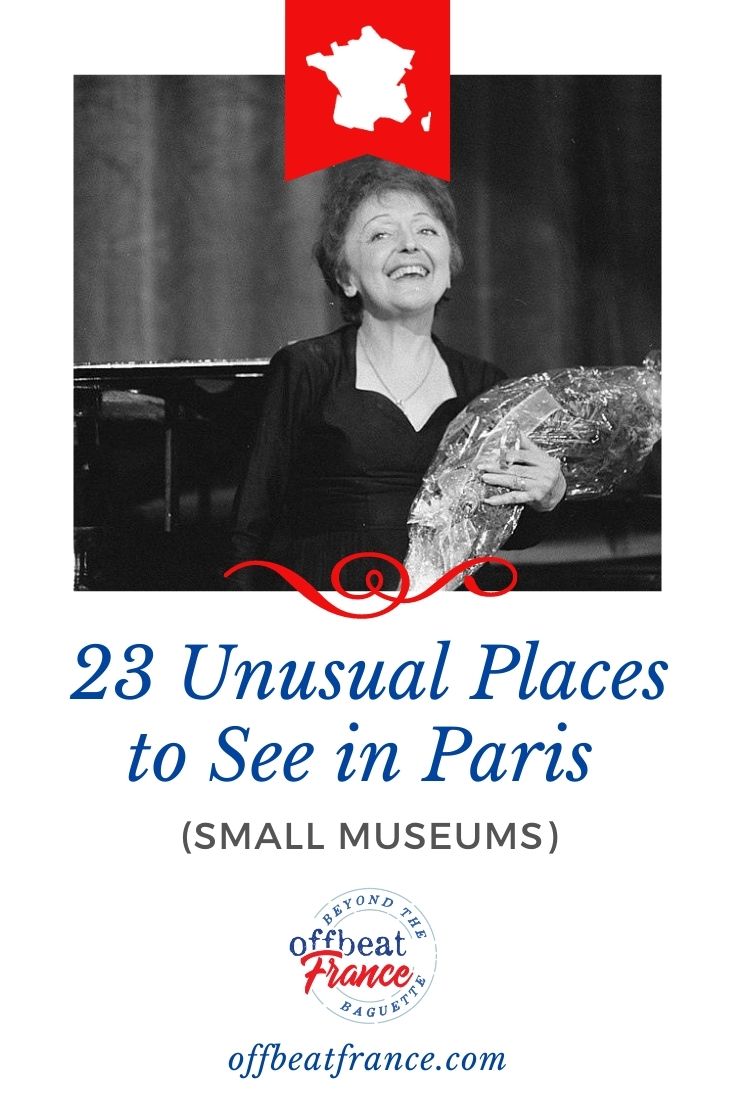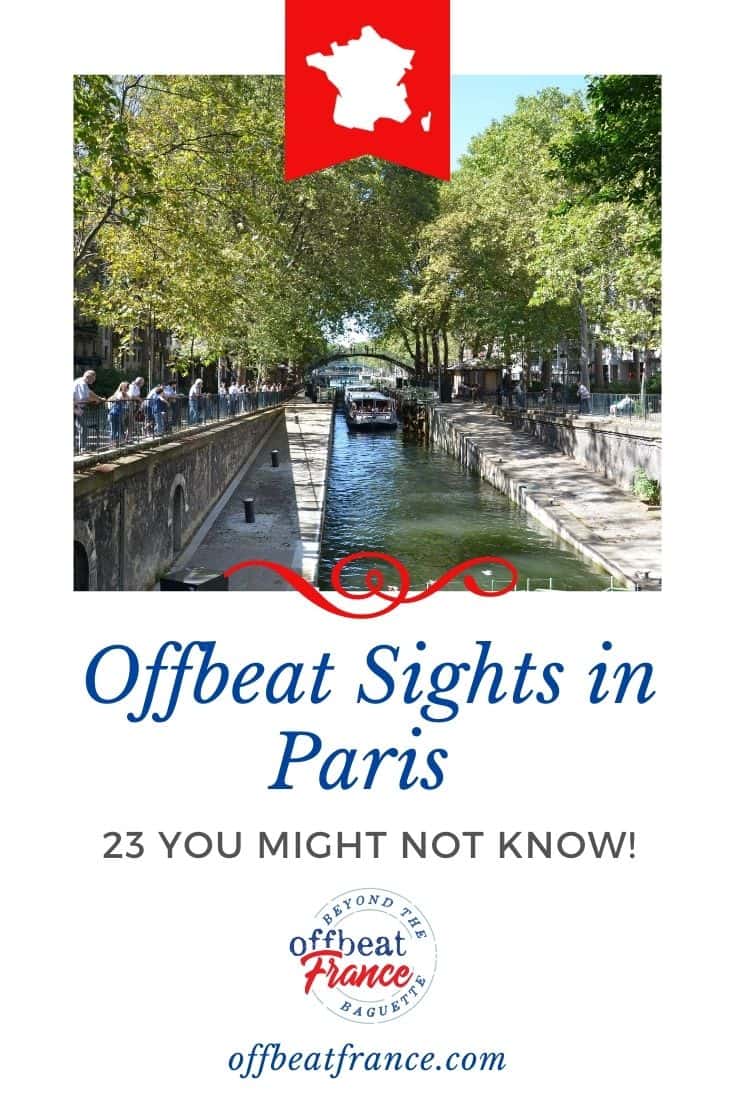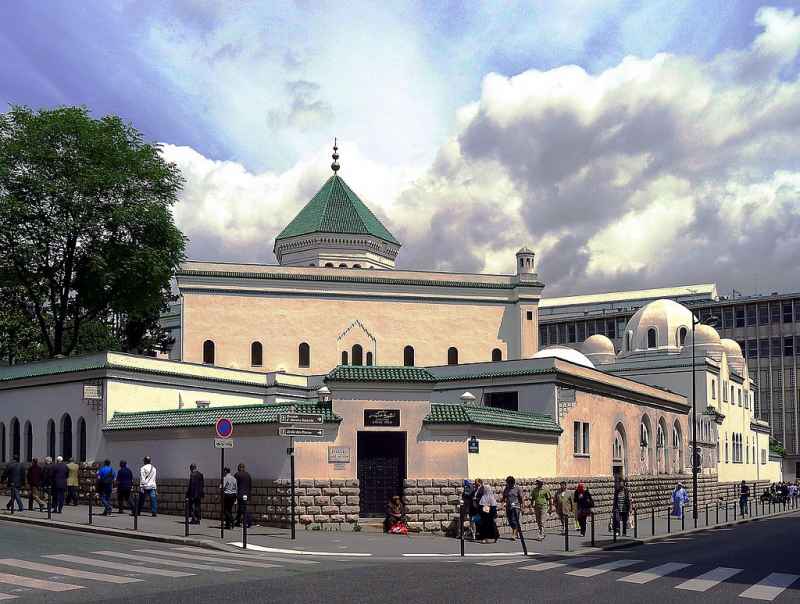Unsure about your French table manners? Click Here to download > > How to avoid these 10 food etiquette mistakes !
- Home ›
- Destinations ›
- Paris ›
- Off the Beaten Path
24 Attractions That Are Off The Beaten Path In Paris
Updated 09 December 2023 by Leyla Alyanak — Parisian by birth, Lyonnaise by adoption, historian by passion
Although I love visiting my old haunts, I do seek out places that are off the beaten path in Paris. To round off my own list, I've asked fellow writers and francophiles to share their favorites with me. This is the result.
Paris is such a glorious city that even its most mundane corners can reveal secrets. There are rooms we haven't visited in the Louvre, views we haven't seen from the Eiffel Tower and streets we have yet to explore in any of the city's 20 arrondissements.
Here are some of those less visited corners, a few things to see or experience in Paris off the beaten path.
NOTE: Pages on this site may contain affiliate links, which support this site. See full Privacy Policy here.
Offbeat Paris Sights
- 1. Montmartre Vineyard*
- 2. Montmartre Cemetery*
- 3. La Promenade Plantée*
- 4. La Petite Ceinture*
- 5. Canal Saint-Martin*
Historical Sites And Fabulous Architecture
- 6. Institut du Monde Arabe*
- 7. Grand Mosque Of Paris*
- 8. Saint-Denis Basilica
- 9. Archives Nationales
- 10. House of Nicolas Flamel*
Attractions And Fun Things To Do In Paris
- 11. Le Manoir de Paris
- 12. Paris Catacombs*
- 13. Explore the Library
- 14. Relax by Candlelight
- 15. Go to a Strip Show
Galleries And Unusual Museums Of Paris
- 16. Musée Carnavalet
- 17. Relief Maps Museum
- 18. Sewer Museum
- 19. Musée Curie
- 20. Musée Rodin*
- 21. Musée Zadkine
- 22. Musée Edith Piaf
- 23. Musée de la Contrefaçon
- 24. Musée de la Vie Romantique
* See box for authors.
Paris offbeat sights
The beauty of Paris is that it is many villages bundled into one, with every neighborhood different from the next, sometimes from street to street — or even on the same street.
Below you'll find a very subjective off the beaten track Paris guide, a few bits and pieces of the city that may be a little less frequented or perhaps a bit unusual.
1. Montmartre Vineyard
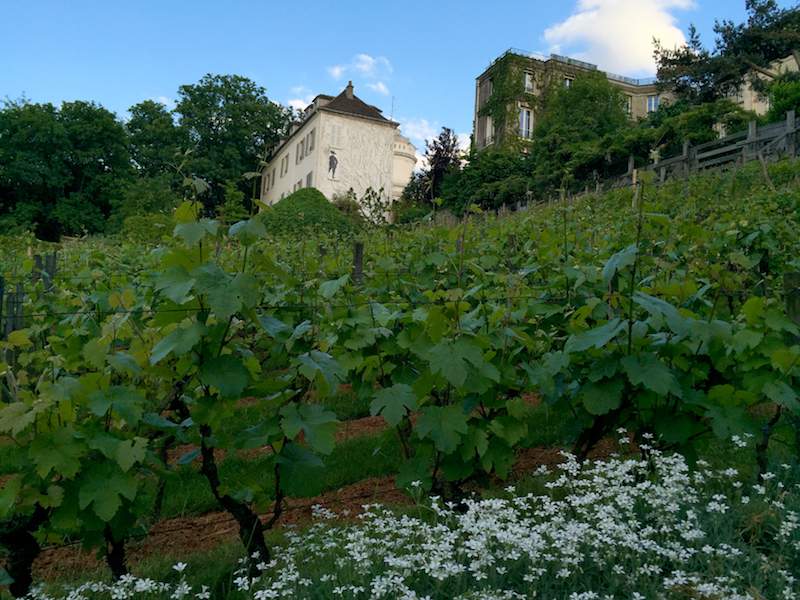
It's hard to imagine these days but bustling Paris was once a vast farmland covered in vineyards. While these were replaced with the grand 19th-century buildings and monuments we admire today, one Parisian vineyard remains: the Clos Montmartre.
Its vineyards date back to Roman times, but was replanted in 1933 and has produced a vintage every year since. Many of Montmartre's walking tours will take you by the vineyard and tell you more about its history.
Or you can also visit during the annual Fête des Vendanges during the harvest in October, when the wine is auctioned off and the bottles become collectors' items, with their local artist-designed labels.
✱ ✱ ✱ ✱ ✱ ✱ ✱
2. Montmartre Cemetery
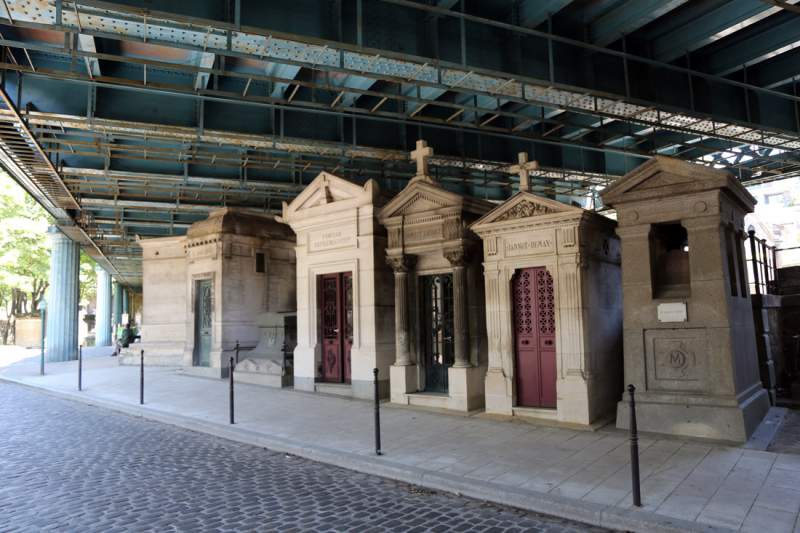
While most visitors seeking green spaces head off to a park or to the Père Lachaise cemetery, why not visit Montmartre Cemetery instead? It has a more local atmosphere and fewer crowds.
The area may be touristy but the cemetery is far enough from sights like the Sacré Coeur, Place du Tertre or Moulin Rouge to be considered off the beaten path. It also happens to be crossed by an elevated street, the Rue de Caulaincourt, in the form of a metal bridge that dates back to the 1880s.
Montmartre Cemetery has its own celebrity graves and a map at the entrance provides their exact location: you can visit the legendary singer Dalida, the 19th-century novelist Stendhal, the physicist Ampère, the composer Berlioz, German poet Heinrich Heine, Nijinsky the ballet dancer, and many more.
So if you happen to have, say, 3 days in Paris or more, you may have time for some lesser-known attractions.
20 Avenue Rachel, Paris 18
✱ ✱ ✱ ✱ ✱ ✱ ✱
3. La Promenade Plantée
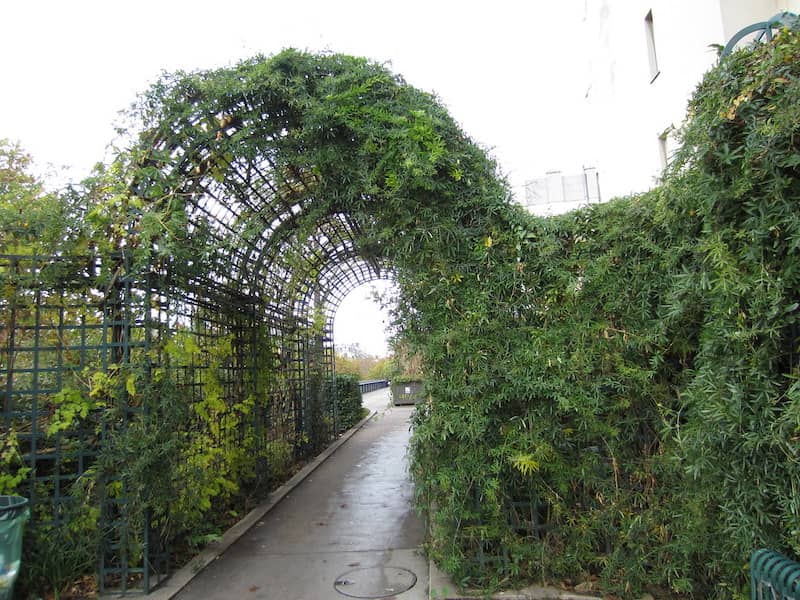 View of the Promenade Plantée pixn8tr / CC BY-NC-SA 2.0
View of the Promenade Plantée pixn8tr / CC BY-NC-SA 2.0Located in the 12th arrondissement near the Bastille Opera House, the Promenade Plantée is also known as the ‘Coulée Verte René-Dumont’. It was once part of the Vincennes line, a steam railway running through the heart of 19th-century Paris and which might have been used for day trips from Paris.
The abandoned structure was converted into the world’s first elevated park — and was also the inspiration behind New York’s famous High Line.
The train tracks, formerly covered in steel, have now blossomed into a beautiful park filled with trees and flowers. Locals and tourists alike stroll the 4.5km-long pathway and admire the maples, roses, and lavender – all with a bird’s eye view of the bustling streets 10 meters below. Yet along the street, if you didn't know it was there, you might miss it altogether.
To enter, climb the stairs near the beginning of Avenue Daumesnil. At the end of the avenue, stop by the police station and you’ll spot the art deco sculptures jutting out from the top floor balconies.
1 Coulée verte René-Dumont, Paris 12
✱ ✱ ✱ ✱ ✱ ✱ ✱
4. La Petite Ceinture
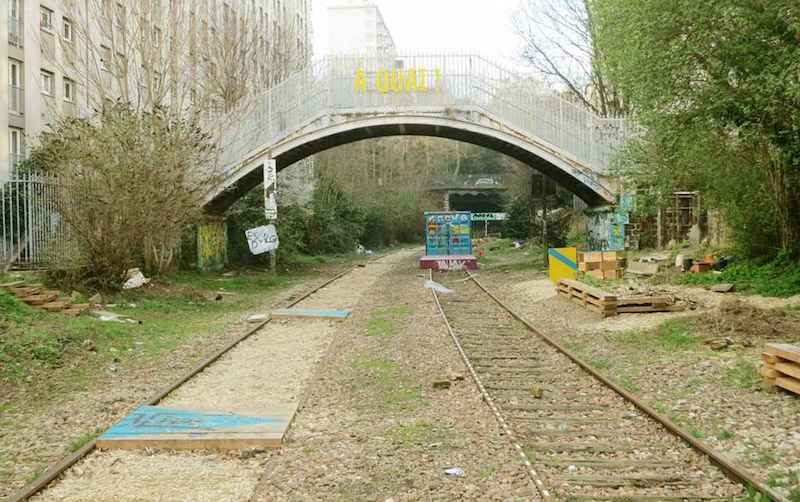
The Promenade Plantée is not the only railway refurbishment project in Paris: there's also La Petite Ceinture, or Little Belt, a 19th-century railway that circumnavigated the city.
Initially it only transported goods but it soon began carrying passengers, but fell into decline with the arrival of the Metro. It stopped carrying passengers in 1934 and goods by the 1970s.
Fertile ground for street art and rave parties, the city eventually decided to convert the area into green spaces. The Petite Ceinture covers several arrondissements – 12th, 13th, 15th, 16th and 17th – with the best preserved being the 15th, with its railway tracks and a secondary station.
Between rue Rottembourget and rue de Montempoivre, Paris 12
✱ ✱ ✱ ✱ ✱ ✱ ✱
5. Canal Saint-Martin
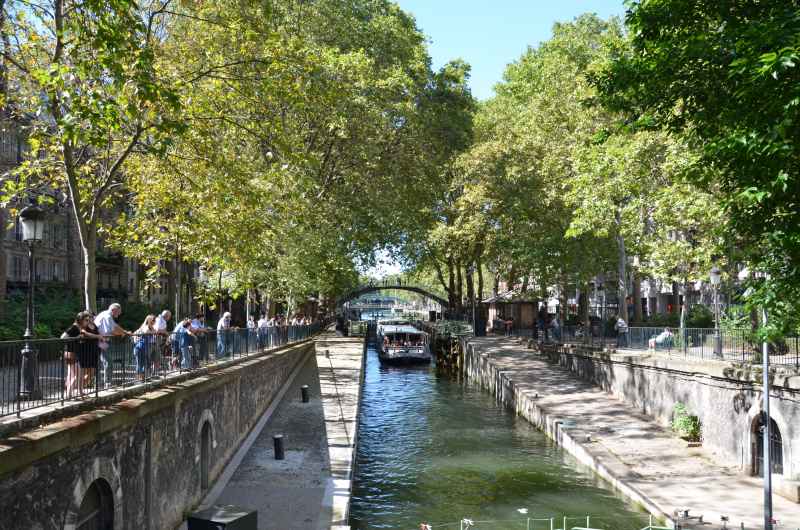
The Canal Saint-Martin has become one of the trendiest parts of the city of light. At night, it turns into party central and throngs of young people gather here for a drink or two before supper.
Whereas the Seine River is perfect for the city's major sights, the Canal Saint Martin is where you'll see Parisians enjoying their everyday lives.
Walking along the canal is a delight but perhaps the best way to see it is by taking a Canal Saint-Martin cruise, which will take you through the canal's four locks.
The 2.5-hour cruises run up to three times a day in both directions. If you leave from Villette (Jaurès metro) and finish at Bastille, you'll be following the water's natural course. But nothing says you can't do it the other way around!
Metro: Jaurès
✱ ✱ ✱ ✱ ✱ ✱ ✱
READ MORE: 7 Non-Touristy Things To Do In Paris!
✱ ✱ ✱ ✱ ✱ ✱ ✱
Historical sites and fabulous architecture
If you love architecture and beautiful buildings, you'll love that some Parisian buildings are nearly 1000 years old — Notre Dame Cathedral (1163), Sainte Chapelle (1248) or the Sorbonne (1257).
But the city carries a full range of styles, from the Napoleonic Empire to the destruction and reconstruction of part of Paris by Baron Haussmann in the second half of the 19th century. Whether you're in love with Classical, Belle Epoque, Art Nouveau, Art Deco or contemporary architecture, you'll find it in Paris.
Here are a few of the less visited ones.
6. Institut du Monde Arabe
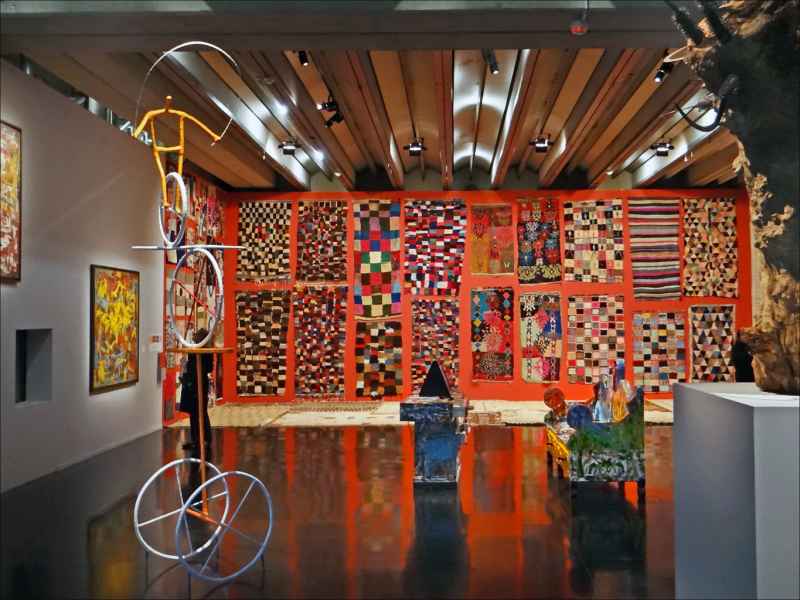 The institute plays host to regular exhibits from the Arab world. Here, Le Maroc contemporain exhibition in 2014-15. Photo by Jean-Pierre Dalbéra via CC BY 2.0
The institute plays host to regular exhibits from the Arab world. Here, Le Maroc contemporain exhibition in 2014-15. Photo by Jean-Pierre Dalbéra via CC BY 2.0Links with Arab countries date back centuries so it is really no surprise that a trip to France would involve interaction with Arab history and culture.
The Institut du Monde Arabe (Arab World Institute) is a stunning building, in which architects Jean Nouvel and Pierre Soria combined Islamic geometrical designs with a modern glass façade.
To immerse yourself in the history and culture of the different Arab countries, visit the permanent collection between the 4-7th floors. One of the unexpected highlights is the fabulous bookstore, which features key works that connect the Arab world and Europe.
The Institut is an absolute must for anyone interested in the Arab world. It also happens to have the most amazing view over Notre-Dame... It is part of this fun vintage 2CV tour of the city.
1 Rue des Fossés Saint-Bernard, Paris 5
✱ ✱ ✱ ✱ ✱ ✱ ✱
7. Grand Mosque Of Paris
Another link with the Arab world is the Great Mosque of Paris, which just happens to be one of the most instagrammable places in Paris.
It is the biggest mosque in Paris and the third-largest in Europe.
Its outdoor garden, mosaics and characteristic arches were inspired by the al-Qarawiyyin mosque in Fez, Morocco, one of the oldest in the world. The links with Morocco are strong: In 1926, Sultan Yusef of Morocco attended the inauguration in person.
In addition, its 33-meter minaret found its own inspiration in the Al-Zaytuna Mosque, in the heart of Tunis, in Tunisia. For the best view of the minaret, head to the mosque's gardens.
Not only is the design inspired by Maghreb architecture, but specialized craftsmen were brought in from North Africa to build it in a way that would respect its original inspiration.
2bis Place du Puits de l'Ermite, Paris 5
✱ ✱ ✱ ✱ ✱ ✱ ✱
8. Saint-Denis Basilica
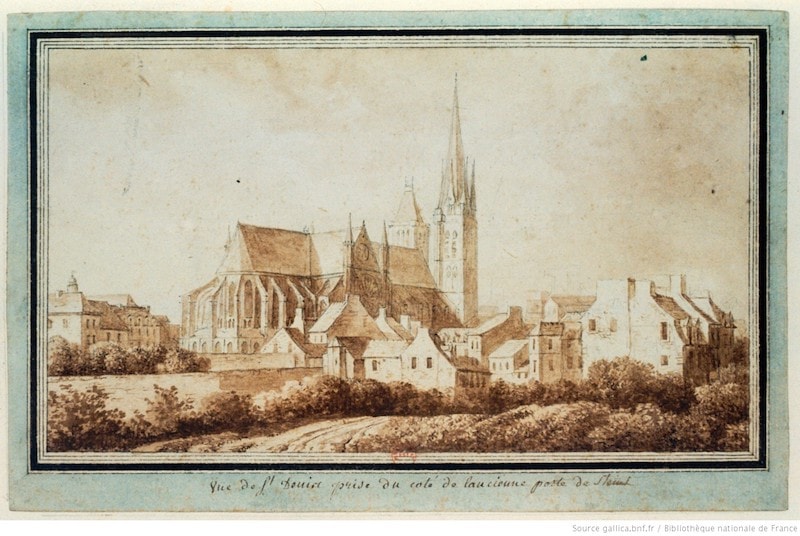 18th-century drawing of Saint-Denis Basilica. Courtesy gallica.bnf.fr
18th-century drawing of Saint-Denis Basilica. Courtesy gallica.bnf.frParis is full of magnificent churches, from Notre-Dame and the Sacré-Coeur to the Sainte Chapelle or la Madeleine — but one of the most fascinating is the Gothic-style Basilique Cathédrale de Saint-Denis, the final resting place of the kings and queens of France (and, according to many, one of the most haunted places in Paris).
This building sits on the grave of Saint Denis, a third-century Bishop of Paris. By the 7th century, it had become the resting place of the kings of France.
Saint-Denis is one of the premier sites for dark tourism in Paris: it contains the tombs of 43 kings, 32 queens and 10 loyal servants of the crown, along with the largest collection of funeral sculptures from the Middle Ages to the Renaissance. The tombs were ransacked during the French Revolution, but some have been recovered over time.
1 Rue de la Légion d'Honneur, 93200 Saint-Denis
✱ ✱ ✱ ✱ ✱ ✱ ✱
FASCINATED BY THE FRENCH REVOLUTION?
✱ ✱ ✱ ✱ ✱ ✱ ✱
9. Archives Nationales
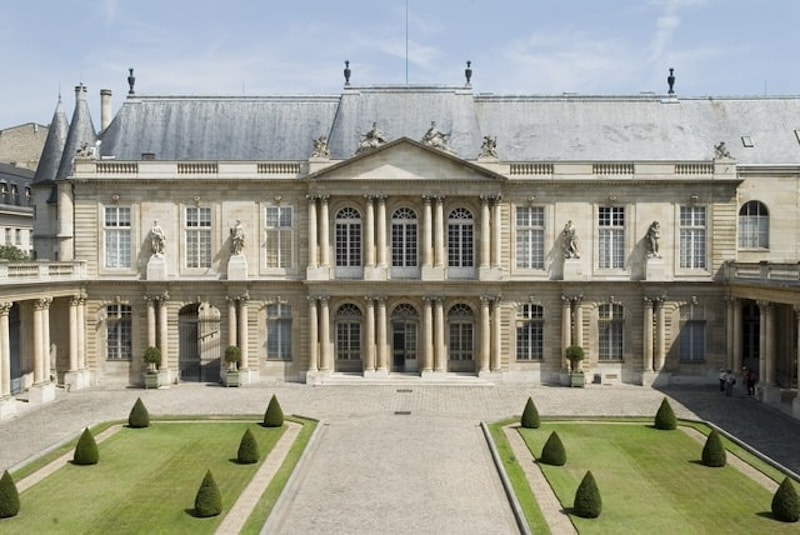 Hotel de Soubise houses the National Archives. (Archives nationales/Atelier de photographie (Paris), CC BY-SA 3.0, via Wikimedia Commons)
Hotel de Soubise houses the National Archives. (Archives nationales/Atelier de photographie (Paris), CC BY-SA 3.0, via Wikimedia Commons)Have you ever wondered what Marie Antoinette wrote in her last note before she... lost her head? Or what Joan of Arc's handwriting looked like?
Look no further because you'll find all of these and a lot more in France's National Archives, set up in 1790 during the French Revolution. More than 400km of archives – almost the distance from Paris to London – cover covering documents from the 7th century to the French Revolution. More modern documents are in one of the two modern suburban additions.
The building itself was the home of the Princes of Soubise (she was reputed to have had an affair with Louis XIV), built over a former Templar fortress. A museum now shows off the most important historical documents as well as a few beautifully decorated rooms of those times. A stroll through the gardens is perfect on a sunny day!
Visit the National Archives website in English.
✱ ✱ ✱ ✱ ✱ ✱ ✱
10. House of Nicolas Flamel
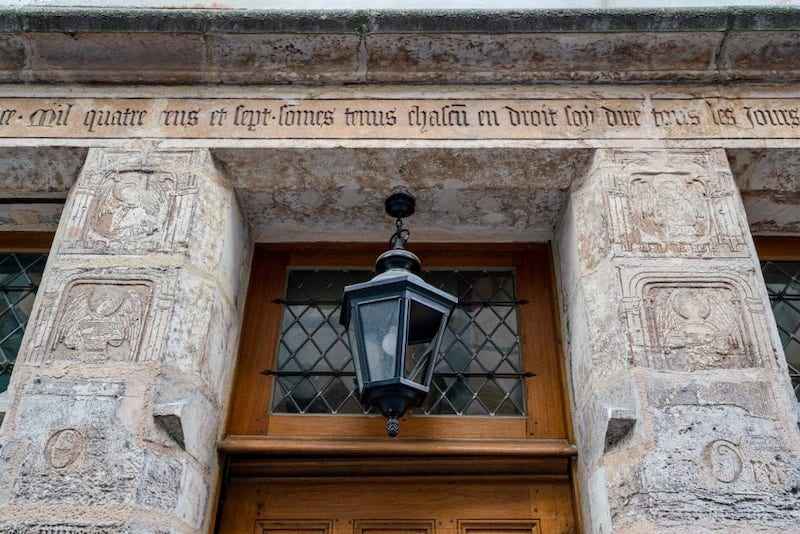
Tucked away on a quiet street in the 3rd arrondissement of Paris sits the oldest domestic building in the city.
Not only is the stone house notable for its age, but it was originally home to a well-known resident: Nicholas Flamel (who may or may not have been an alchemist).
If the name sounds familiar, it may be because you've already met him in Harry Potter and the Philosopher's Stone...
Built in 1407, Flamel's Parisian home is distinctive: its façade is carved with symbols, which immediately sets it apart from the other buildings nearby.
Today, the building contains a restaurant named after Flamel, one of the oldest auberges in town.
51 rue de Montmorency
✱ ✱ ✱ ✱ ✱ ✱ ✱
Attractions and fun things to do in Paris
There's enough in Paris to keep you entertained for a decade, whatever you do. But here are a few possibilities you might not have thought about... yet...
11. Le Manoir de Paris
Now this really IS one of the most unusual things to do in Paris. In this city steeped in history and art and beauty, prepare to be... horrified!
That's right, a horror show. Now before you wave this off in distaste, please give me a moment to convince you.
If you're fascinated by Paris, wouldn't you want to know about its legends? Its criminals and assassins? Its haunting crimes?
Le Manoir de Paris gives you all of this. Several dozen actors working in French (and often in English) bring these scenes to life, re-enacting the legends that illustrate the underbelly of Paris — legends like the Phantom of the Opera, the Hunchback of Notre-Dame or the crocodile in the Paris sewers, and more than a dozen others which unfurl before you in 23 interactive rooms (once you get past the gargoyle at the door, that is).
It's different, but it won't leave you indifferent.
Click here to get your Skip the Line Fastpass ticket
✱ ✱ ✱ ✱ ✱ ✱ ✱
12. Catacombs of Paris
Why not travel underground to one of the more gruesome sites of French history? You can visit on your own, or take a small Catacombs tour which will take you to some "secret" areas not open to the casual visitor.
The Paris Catacombs, an 18th-century warren of tunnels, are packed to the brim with bones from over six million people. They were built as an underground ossuary (a place to store bones after being buried for a long time) to solve the problem of overcrowded city cemeteries.
The tunnels meander under the city from the former Paris gate fittingly known as Barrière d'Enfer, or "Gate of Hell".
From 1786 onward, wagons full of remains dug up from cemeteries all over the city would be transported in the dead of night to a mine shaft opening that was connected to the tunnels.
The bones were deposited in the mine shaft but remained forgotten for nearly a century before it became a spot for quirky private events and was turned into a museum, which opened to the public in 1874.
Because the small tunnels can only accommodate 200 people, the catacombs also attract some of the longest queues in Paris so make sure to check out these handy hacks for skipping the line at the most crowded Paris attractions, or simply buy a skip-the-line ticket.
✱ ✱ ✱ ✱ ✱ ✱ ✱
👻 LOVE SPOOKY STORIES?
✱ ✱ ✱ ✱ ✱ ✱ ✱
13. Explore the Library
I kid you not! Yes, the library.
If you happen to be in Paris on a Friday morning, sign up for the history tour of the American Library in Paris and find out how this more than century-old institution survived the World War II occupation to become Europe’s largest English-language lending library.
And if you’re not here on a Friday, check out its calendar for all sorts of activities. I attended a fabulous writing workshop there, and they also have readings and other cultural events.
If you’re traveling with family, make sure you find out about all the children’s and teens’ activities – there are plenty!
✱ ✱ ✱ ✱ ✱ ✱ ✱
14. Relax by Candlelight
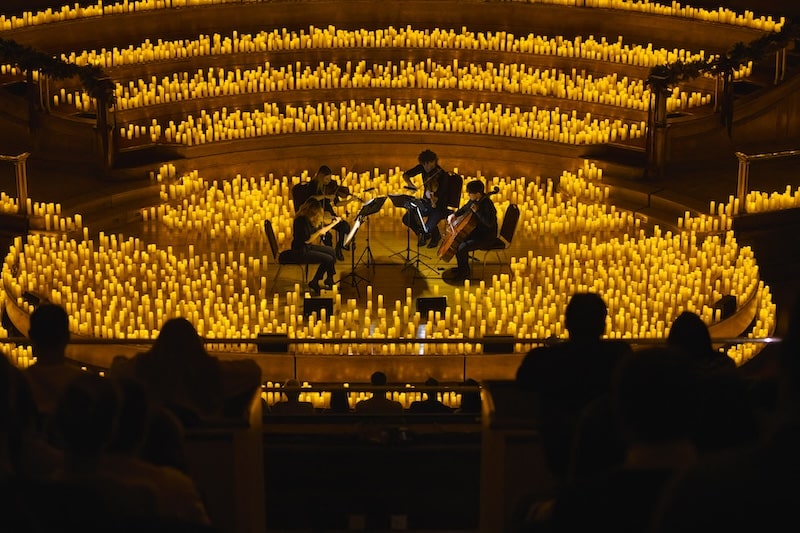
Have you ever been to a Candlelight Concert? If not, Paris is the ideal initiation.
Candlelight Concerts involve talented classical musicians and a musical theme – it can be classical, or a classical version of more modern composers like Queen or Louis Armstrong or Taylor Swift.
The venues are almost always electrifying (and surrounded by candlelight, of course), with the latest Paris event taking place on the first floor of the Eiffel Tower!
✱ ✱ ✱ ✱ ✱ ✱ ✱
15. Go to a Cabaret
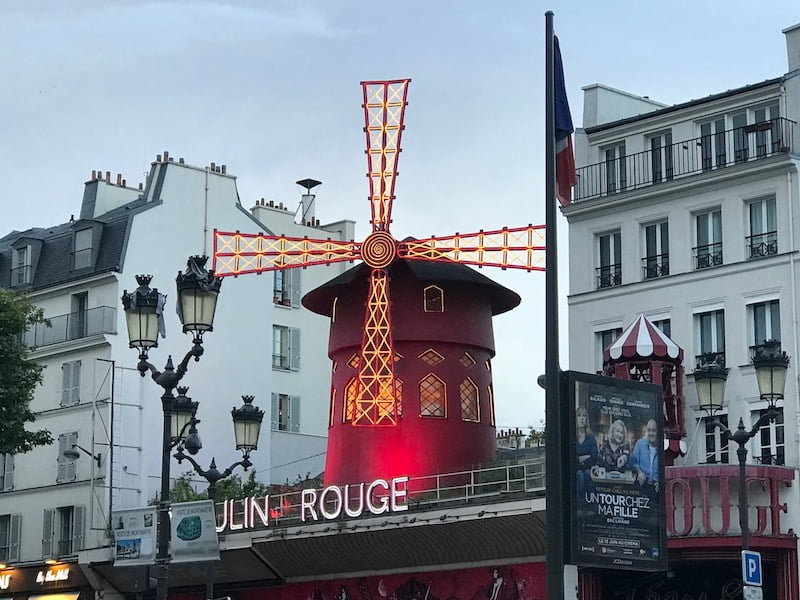
Yes, you read that right!
Burlesque, or cabaret, is sooo Paris that you should consider this experience at least once in your life.
For my 21st birthday, a rite of passage, a group of friends took me to the Crazy Horse, one of the legendary cabarets in Paris (the others being the fabled Moulin Rouge, Lido and Paradis Latin).
Yes, there is some nudity (especially at the Crazy Horse) but mostly, there are extraordinary dance and music performances, with bright colors and elaborate costumes, and often – French can-can. Paris was its birthplace, after all.
✱ ✱ ✱ ✱ ✱ ✱ ✱
Galleries and unusual museums of Paris
Paris is full of world-class museums, 136 at latest count. Some are so famous they are household names, but others, just as good, are less known. They are smaller, a little hidden perhaps, or highly specialized.
Here is a selection of the not-so-famous but absolutely-worth-seeing offbeat or unusual or smaller museums of Paris.
✱ ✱ ✱ ✱ ✱ ✱ ✱
✱ ✱ ✱ ✱ ✱ ✱ ✱
16. Relive Paris History at the Musée Carnavalet
Visiting the Carnavalet is one of my personal favorite things to do in Paris, a great spot worth seeing in this wonderful city. There's nothing small about it, but it's under-visited and absolutely extraordinary. It's THE place to be if you're interested in Paris history.
It is housed in two Renaissance-area mansions, and in the courtyard, you'll find one of the few statues of Louis XIV which somehow escaped destruction during the French Revolution.
Speaking of revolution, the museum is particularly strong on this theme. Its 600,000-piece collection houses such oddities of the death mask of Robespierre, a key revolutionary figure, and one of my favorites, a set of guillotine-shaped earrings: sadly they’re not always on permanent display, so you’ll have to do with my blurry photograph. When I returned to take a better photo, they had been stashed away.
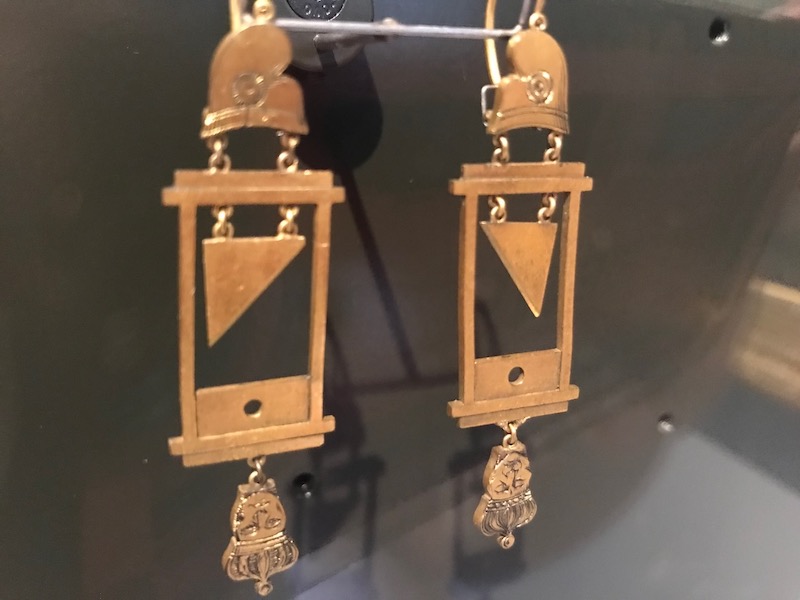
The museum offers a rare glimpse into the pre-modern layout of Paris, along with information on Baron Haussmann’s overhaul of Parisian urban planning. I’ve also seen some extraordinary Art Nouveau storefronts here. What with old shop signs and original burlesque posters, you’ll have a hard time leaving.
23 Rue de Sévigné, Paris 3
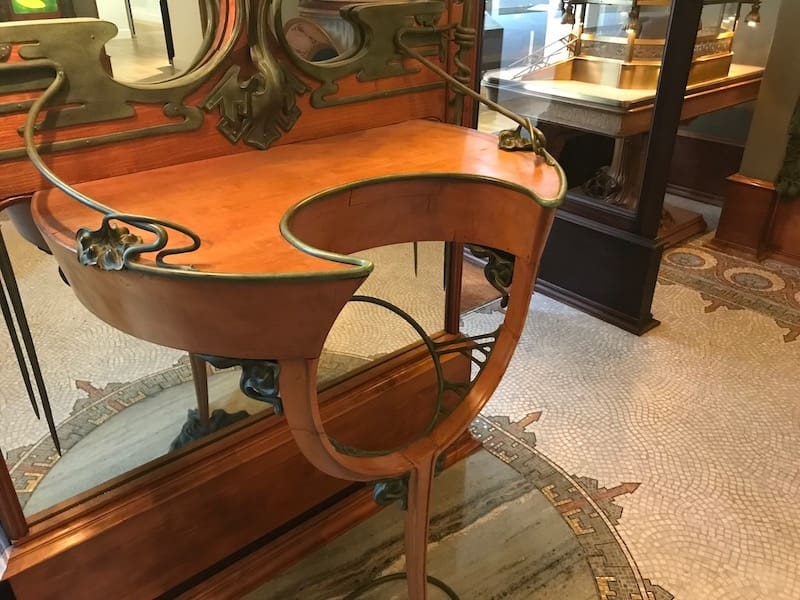
✱ ✱ ✱ ✱ ✱ ✱ ✱
READ MORE: Unusual Small Museums in Paris and Beyond
✱ ✱ ✱ ✱ ✱ ✱ ✱
17. Musée des Plans-Reliefs
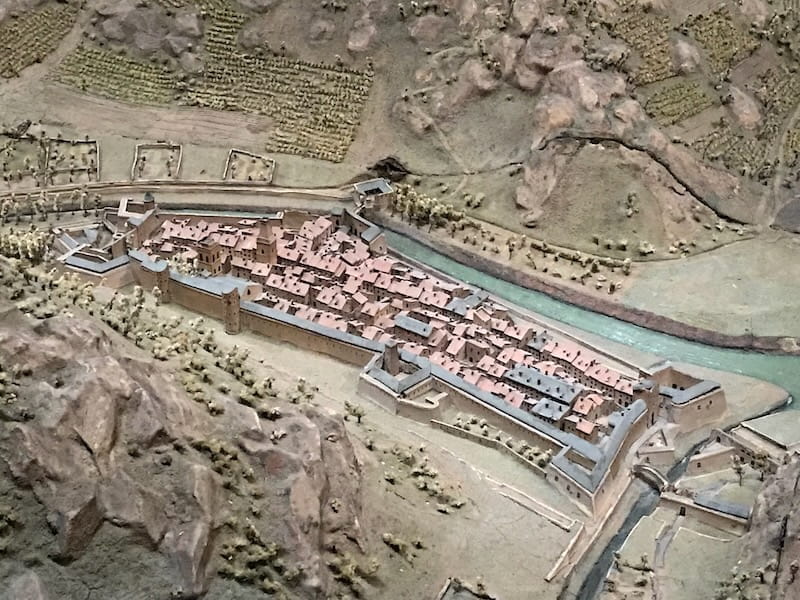
Even if you visit Napoleon’s Tomb at Les Invalides, you might still miss the Museum of Relief Maps. It’s in the same complex, but unless you know what it is and what you’re looking for, you could walk right by.
And that would be a mistake, because it's actually one of the best things (and more unusual things) to see here.
Not all of us are fascinated by fortresses, but France has historically excelled in defensive building. The scale models could be better lit and labeled, but they were still astounding to see.
A certain Sébastien Le Prestre de Vauban was a military engineer under Louis XIV and was so good at his job that he became known as the greatest engineer of his time. A string of 12 of his fortified buildings are protected as a UNESCO World Heritage Site, and models of his defensive systems can be seen at the museum, which is unique in the world for its collection of scale models from the 17th to the 19th centuries.
Hôtel national des Invalides, 129 Rue de Grenelle, Paris 7
✱ ✱ ✱ ✱ ✱ ✱ ✱
18. Explore the Sewer Museum
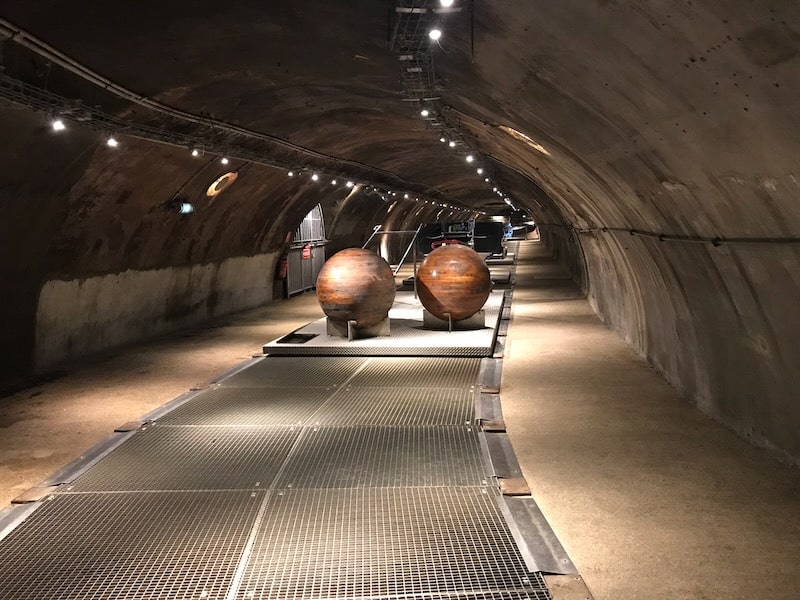
This is definitely one of the more offbeat visits to enjoy in Paris, and although it was especially gloomy on the cold, rainy day I visited, once I descended into the sewers, that gloom somehow disappeared.
This is where you'll learn about what actually happens “down there”, beneath Paris. You'll get all your questions answered: What happens when it rains? Or… Where does “everything” go?
If you bought a Paris Pass, the Sewer Museum, or Musée des Egouts is included.
✱ ✱ ✱ ✱ ✱ ✱ ✱
19. Musée Curie
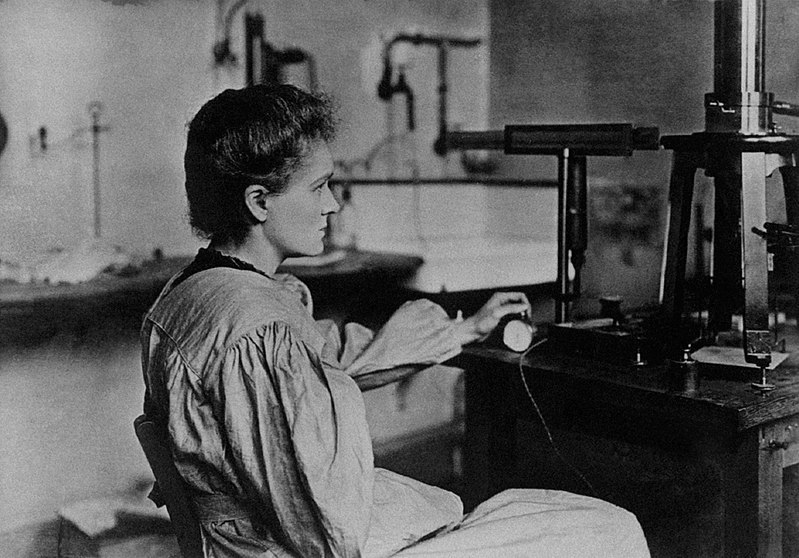 Marie Curie in her lab
Marie Curie in her labMost French children — and many non-French ones — knows the story of how Marie Curie (and her husband Pierre, who died young) discovered radium and the eventual use of radioactivity in treating cancer. The family would eventually win a total of five Nobel prizes.
Looking at all that century-old laboratory equipment, it's hard to imagine how such mechanical, non-electronic means could have yielded such imposing results.
Interestingly, her business card from those years bore her title, Professor of the Science Faculty — the first woman to hold that title at a French university. But it still listed her as Mrs. P (as in Pierre) Curie... Women in science were scarce, and in some countries, weren't even allowed into university.
Marie Curie was also the first woman to be awarded a Nobel Prize, although initially only her husband had been included. To his credit, he complained and the committee recognized that their work had been undertaken jointly.
For more information, visit the Musée Curie website.
1 Rue Pierre et Marie Curie, Paris 5
✱ ✱ ✱ ✱ ✱ ✱ ✱
20. Musée Rodin
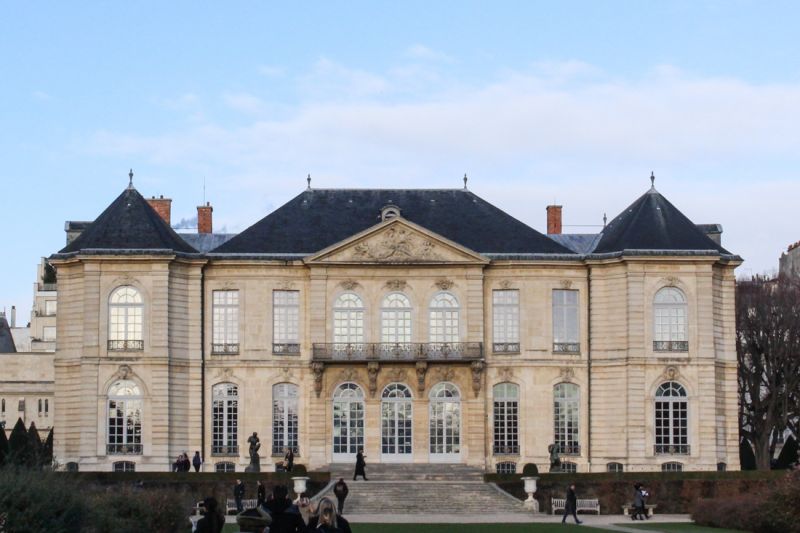
There are many small museums in Paris and the Musée Rodin is among the best.
The museum has two sites. One is on the outskirts of Paris, in Auguste Rodin's former home at Meudon, but the one we're talking about here is the Hotel Biron, in the 7th arrondissement, which served as Rodin's studio-cum-storage space.
If you are not familiar with the name Rodin, you may still be familiar with his most famous work: a sculpture called "The Thinker". It features a heroic, naked man sitting hunched over, thinking.
The Rodin Museum was almost destroyed to make way for an apartment block. At one point it was a girl's school but the Catholic nuns removed all the interior decorations and sold them. Eventually the school closed and much time and money has been spent tracking down the house's contents and restoring them.
The results are a fairytale museum with high ceilings, tall windows, chandeliers and an imposing spiral staircase.
77 Rue de Varenne, Paris 7
✱ ✱ ✱ ✱ ✱ ✱ ✱
21. Musée Zadkine
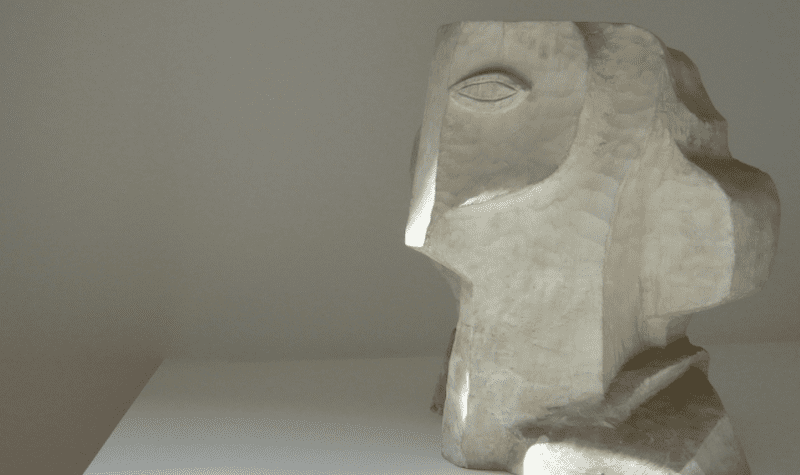
If you love sculpture, the Musée Zadkine should also be part of your Paris wanderings.
In case you aren't familiar with him, Ossip Zadkine was born in Russia but arrived in Paris in 1910, where he worked between the wars until 1967. He represents many of the artistic streams of the 20th century, from primitivism to Cubism and everything in-between.
Zadkine lived and worked in what is now the museum. He moved here after his earlier studio almost collapsed under the weight of his sculptures. Because of this, the museum has a special feeling, not only as an exhibition, but as a proper working studio.
To visit the museum, click here.
100bis Rue d'Assas, Paris 6
✱ ✱ ✱ ✱ ✱ ✱ ✱
22. Musée Edith Piaf
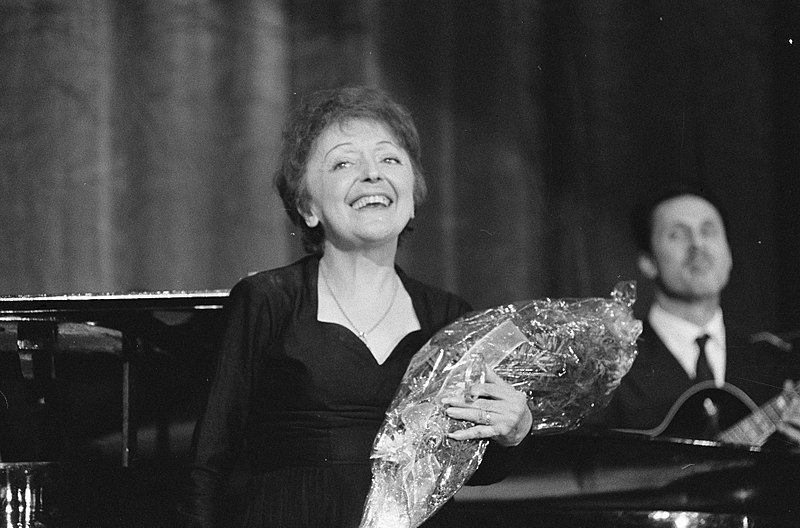 Edith Piaf Eric Koch / Anefo / CC0
Edith Piaf Eric Koch / Anefo / CC0Edith Piaf is as much a monument to France as is the Eiffel Tower.
The diminutive singer (1m47 / 4' 8") became world famous for her emotional French ballads. She had a difficult life which culminated in worldwide success with the global hit "La Vie en Rose".
One of her lifelong admirers, Bernard Marchois, began collecting mementoes of her life and turned two of his four rooms at home into an intimate private museum in Piaf's honor.
The apartment, in the neighborhood of Ménilmontant, is crammed with the singer's personal memories, from heartfelt private letters to the little black dresses in which she performed. It's a different kind of museum, made all the more personal by the nature of the exhibits and their loving placement in a home setting.
The museum has limited opening hours and you'll need an appointment to visit.
✱ ✱ ✱ ✱ ✱ ✱ ✱
23. Musée de la Contrefaçon (Counterfeit Museum)
 Counterfeit ICE watches - only the colours give them away
Counterfeit ICE watches - only the colours give them awayOne of the more unique things to do in Paris is to visit the tiny but delightful Counterfeiting Museum, which is stuffed with hundreds of imitation items — everything fake, from pseudo-BIC pens to Vuitton bags to, more dangerously, medicines. These days, the museum also contains fake electronics, which didn't exist back when it was inaugurated.
According to Customs, the most counterfeited goods are toys and games, particularly dangerous since they are manufactured with no or unchecked safety standards. Next are sports articles, clothes and body beauty products.
All of this is documented in the museum, which is housed in a building once owned by the Vuitton family in the posh 16th arrondissement.
16 Rue de la Faisanderie, Paris 16
✱ ✱ ✱ ✱ ✱ ✱ ✱
WANT TO EXPLORE BEYOND PARIS? 22 Fabulous Day Trips from Paris by Train
✱ ✱ ✱ ✱ ✱ ✱ ✱
24. Musée de la Vie Romantique
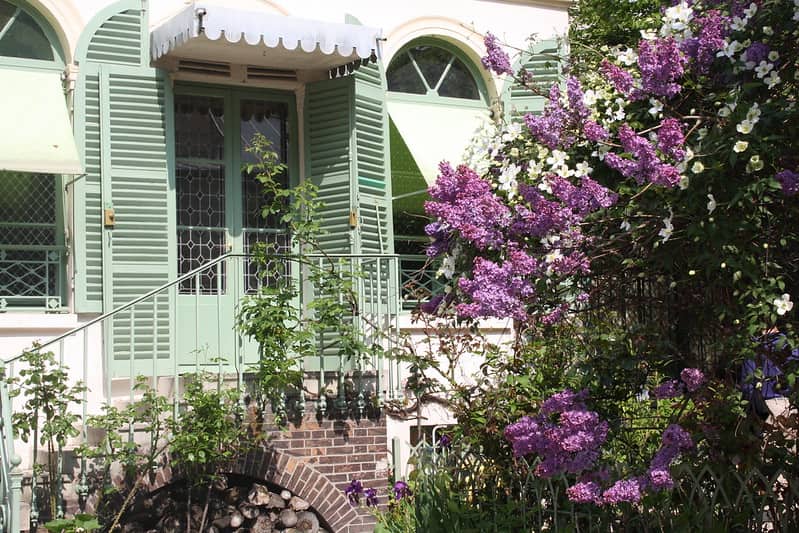 Entrance of the Musée de la Vie Romantique - impossibly romantic, right? Photo by Carsten Sprotte Flickr / CC BY 2.0
Entrance of the Musée de la Vie Romantique - impossibly romantic, right? Photo by Carsten Sprotte Flickr / CC BY 2.0Paris wouldn't be Paris if it didn't glorify romance and romanticism, right?
Hidden behind a metal gate down a shady alley, the building itself screams romance, with its pale green shutters and climbing greenery. Its owners once hosted get-togethers for such luminaries as Ingres, Liszt, Charles Dickens, Stravinsky and Chopin (and, fittingly, his lover George Sand).
You can visit the room in which Chopin played for her and the garden in which the who's who of Romantic artists met to discuss their work.
Opened in 1982, the museum highlights George Sand's memorabilia but also art and mementoes of the mid-19th century Romantic period with paintings, sculptures and everything in-between.
It is a haven where literature, poetry and art coincided, and you can recreate some of their conversations in the garden or the Tea Room. Just imagine you're hearing bars of Chopin floating in the air.
16 Rue Chaptal, Paris 9
CONTRIBUTORS
Montmartre Vineyards: Jennifer of Luxe Adventure Traveler | Montmartre Cemetery & La Petite Ceinture: Elisa of France Bucket List | La Promenade Plantée: Sara of Browns Voyage | Canal Saint-Martin: Kenza of Cups of English Tea | Institut du Monde Arabe: Nina of Lemons and Luggage | Grande Mosque: Maartje of The Orange Backpack | House of Nicolas Flamel: Kate of Our Escape Clause | Catacombs: Kate from Miss Tourist | Musée Rodin: Laura of What's Hot?
Did you enjoy this article? I'd love if you shared it!

